2016 Reebok CrossFit Games RegionalsJun 17, 2016 by Armen Hammer
What If Regionals Were Scored The Old Way?
What If Regionals Were Scored The Old Way?
The 2016 Regional season has come to a close, and the Games qualifiers have been decided. We already compared Regions to see how the qualifiers stacked up a
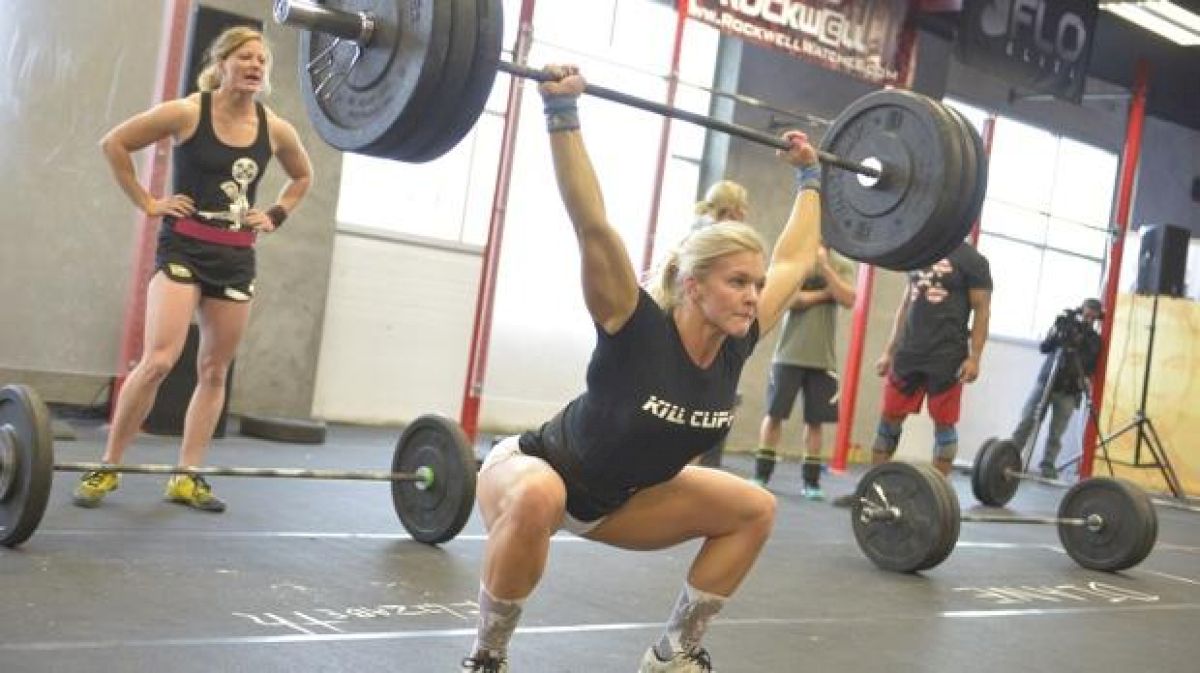
The 2016 Regional season has come to a close, and the Games qualifiers have been decided. We already compared Regions to see how the qualifiers stacked up against each other by comparing their scores, so this time, we’re digging deeper.
First, we scored this year’s Regional results using 2014’s Regional scoring system to see what may have been different. Then, we examined the pros and cons of the two systems.
In 2014, the scoring system was simple: Athletes were awarded the same amount of points as their placing, and at the end of the competition, the athlete with the lowest score won (this is the same system used in the Open).
Implemented in 2015, the new Regional scoring system awards set amounts of points for each place an athlete finishes, and the highest total wins. First place is 100 points, second is 95 points, etc. Also, the point differential gets smaller as the places get bigger—after sixth place, it changes to two-point increments, and after 30th, they switch to one-point differentials.

The new system rewards outstanding performances more and doesn’t punish poor performances as harshly as the old system. It’s also much easier on an athlete with weaknesses if he or she does well in other events. Since the point spread changes as you go down the rankings, it keeps an athlete with a bad finish closer in overall points since the punishment is not proportionate to the reward for a top finish.
Applying the 2014 Regional scoring system to this year’s results shed some light on the pros and cons of each system. Starting with the women, here are the changes we found.

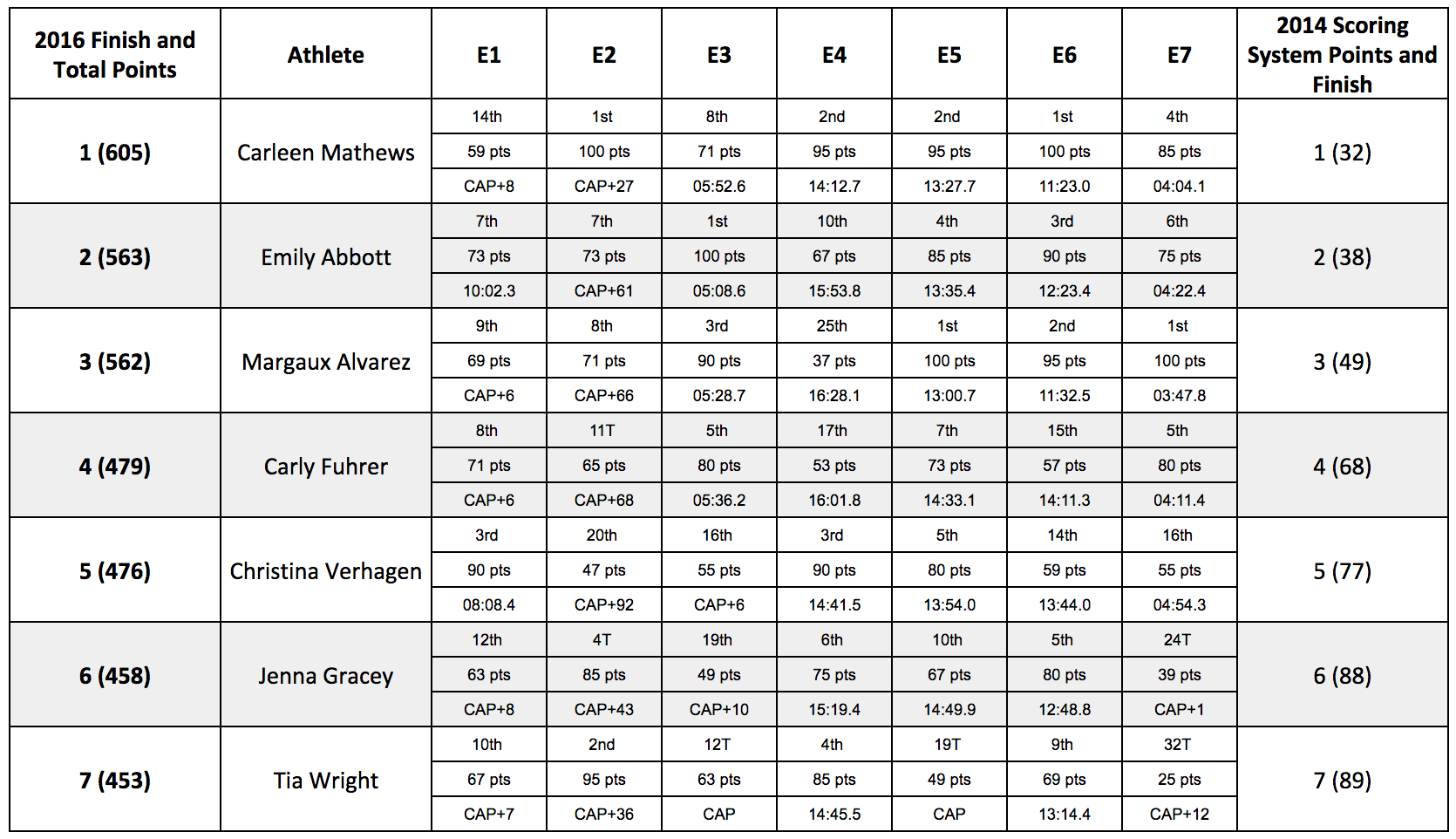
In the Pacific and West Regions, the qualifiers and the qualifying order did not change. Undoubtedly, this year’s top five women are their respective Regions’ best representatives to send to the Games.
In the Atlantic, Meridian, and Central Regions, the top five women were the same, but the finishing order changed.
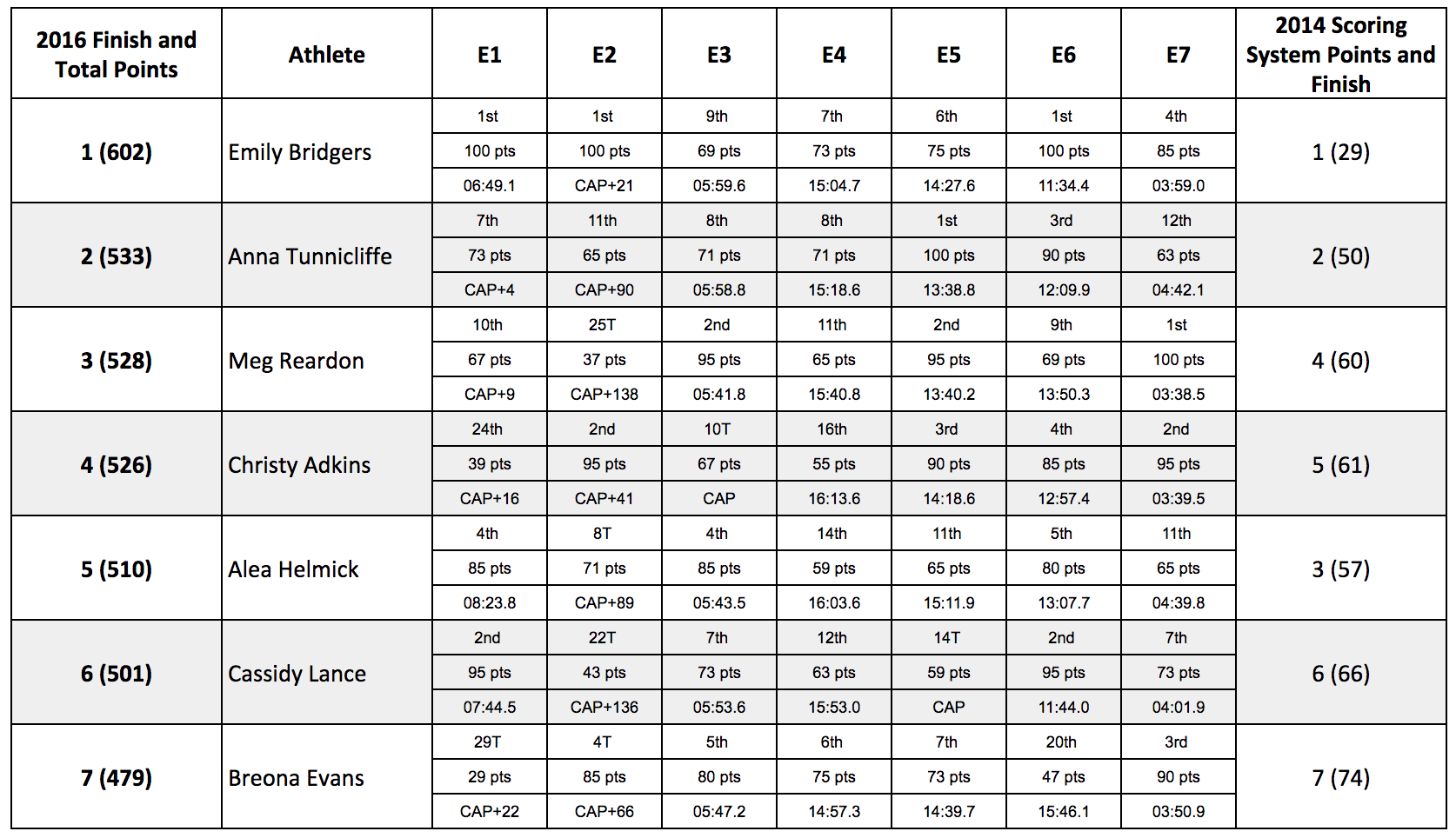
In the Atlantic, Alea Helmick (57 total points) jumped from fifth to third without any finishes below 14th. Meg Reardon (60) and Christy Adkins (61) each fell one place down the leaderboard, but kept qualifying spots. Reardon’s 25th on Regional Nate and Adkin’s 24th on the snatch ladder affected their scores most between the two scoring systems.
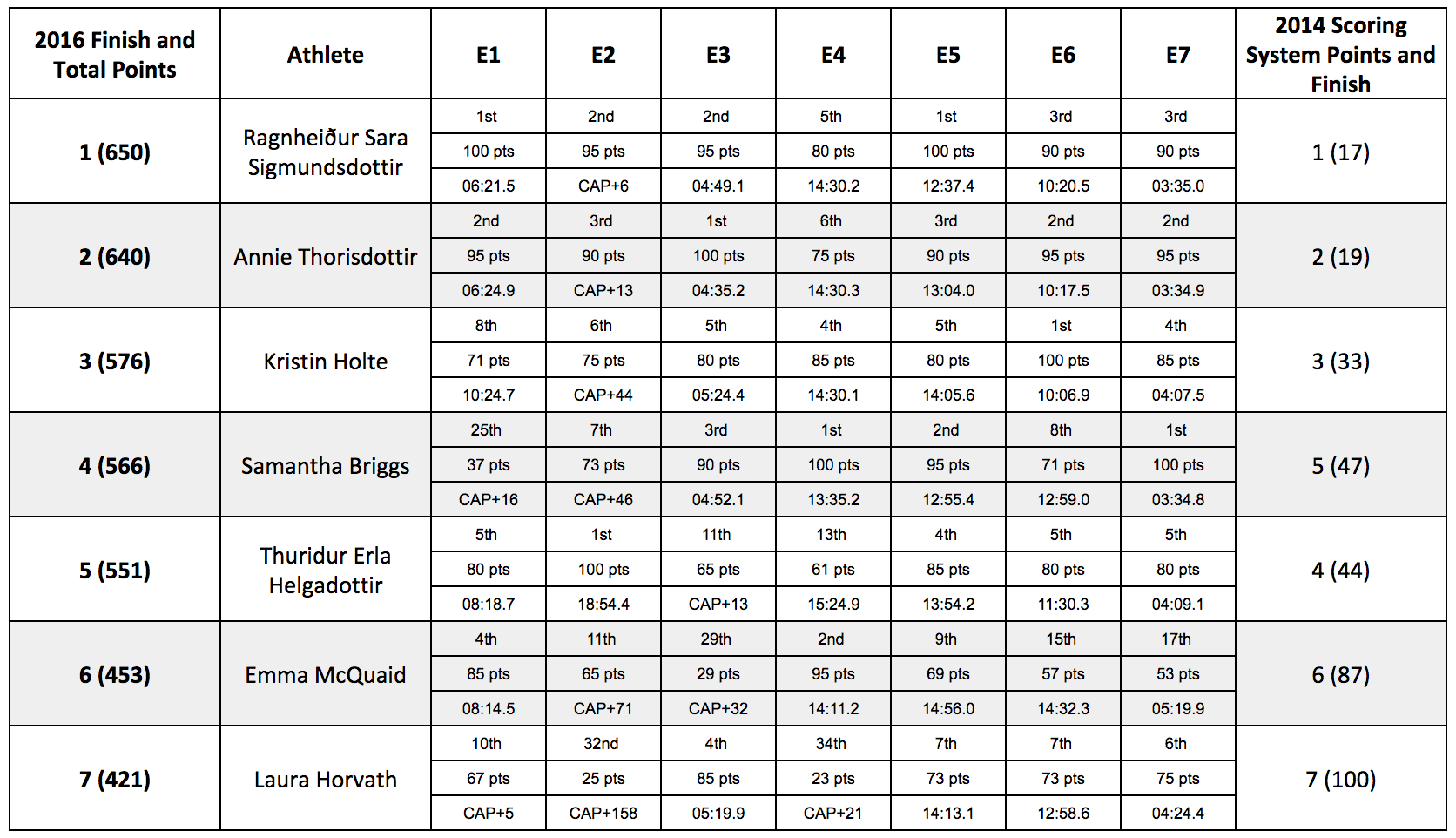
In the Meridian, Sam Briggs (47) and Erla Helgadottir (44) flipped places with Briggs’ 25th on the snatch ladder, which pushed her to fifth place, while Helgadottir moved up to fourth—she didn’t finish lower than 13th in any event.

In the Central Region, the standings shook up quite a bit, but the same five women qualified for Carson. Stacie Tovar (39) became the Central champion without any finishes lower than ninth. This pushed Sheila Barden (46) to second; Jennifer Smith (54) moved up to third; Brooke Wells (55) took more of a hit from her 32nd on Regional Nate, which dropped her to fourth; and Krist Aramo (61) stayed in fifth place.
The most dramatic shakeups came from the South, East, and California Regionals, where qualifiers changed.
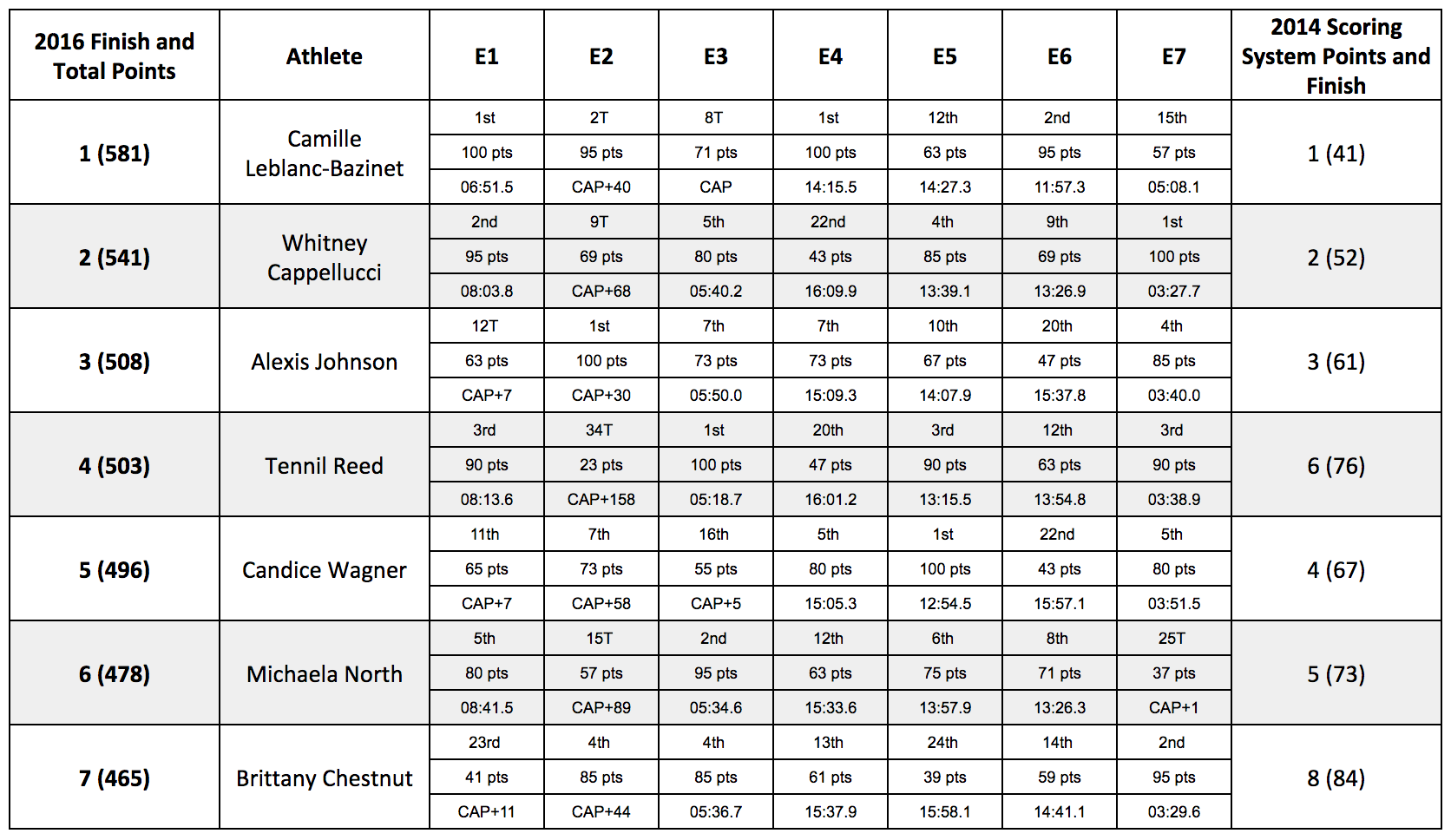
In the South, third-place finisher Tennil Reed (76) dropped to sixth as her 34th in Regional Nate and 20th in the pistol/power clean event did more damage. Candice Wagner (67) moved up from fifth, and Michaela North (73), controversy or no (http://games.crossfit.com/announcements/south-leaderboard-adjustment), took the No. 5 spot.
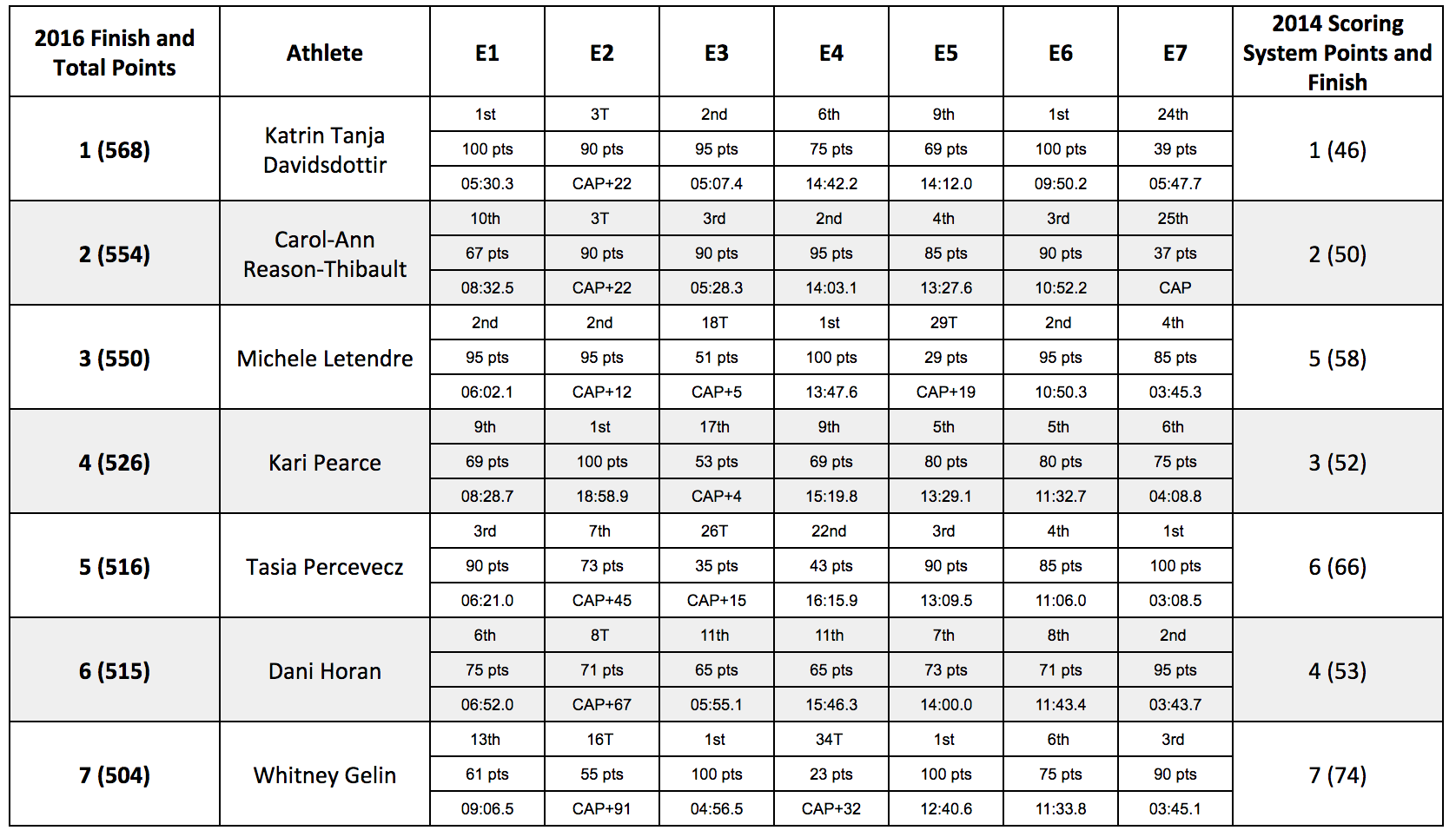
This year in the East, Dani Horan missed qualifying after finishing in sixth. But the old scoring system rewarded her consistency—without any finishes lower than 11th, she was given fourth place. Michele Letendre’s (58) 29th place on Event 5—the run/ghd/deadlift—dropped her to fifth, which moved Kari Pearce (52) into third. Tasia Percevecz (66) would not make her rookie debut at the Games this year due to her 26th and 22nd place finishes on the wall ball/pull-up and pistol/power clean events.
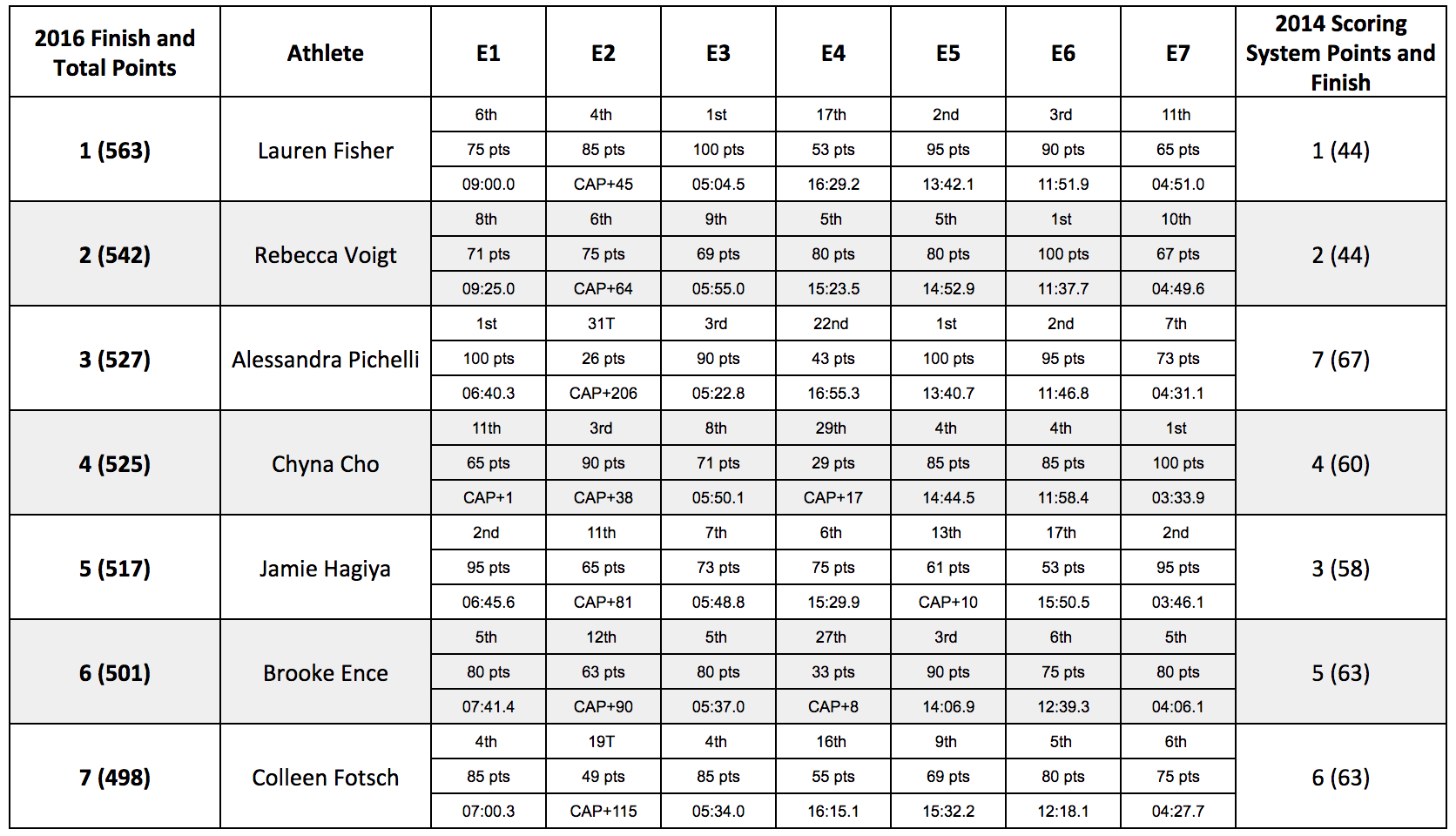
The biggest difference showed in the California Regional, where we saw major drops and a couple of tie-breakers! Alessandra Pichelli (67), who took third this year, dropped to seventh after paying a big price for her 31st place on Regional Nate and 22nd on Event 4’s couplet of pistols and power cleans. Jamie Hagiya (58) moved from fifth to third; Chyna Cho (60) stayed in fourth; and we required a tie-breaker between Brooke Ence and Colleen Fotsch (both with 63 points). Ultimately, Ence would qualify on the strength of her finish on the heavy deadlifts of Event 5. The race for the top spot would have been exciting as well with Lauren Fisher and Rebecca Voigt tying at 44 points with Fisher taking the tie-breaker and staying on top.
As you can see, the scoring system matters, and it’s interesting to see how the new system has impacted the outcome of each Regional. In the next article, we will apply this to the men’s side of the competition and examine the pros and cons of each scoring system.
By Neal Kay
First, we scored this year’s Regional results using 2014’s Regional scoring system to see what may have been different. Then, we examined the pros and cons of the two systems.
In 2014, the scoring system was simple: Athletes were awarded the same amount of points as their placing, and at the end of the competition, the athlete with the lowest score won (this is the same system used in the Open).
Implemented in 2015, the new Regional scoring system awards set amounts of points for each place an athlete finishes, and the highest total wins. First place is 100 points, second is 95 points, etc. Also, the point differential gets smaller as the places get bigger—after sixth place, it changes to two-point increments, and after 30th, they switch to one-point differentials.

The new system rewards outstanding performances more and doesn’t punish poor performances as harshly as the old system. It’s also much easier on an athlete with weaknesses if he or she does well in other events. Since the point spread changes as you go down the rankings, it keeps an athlete with a bad finish closer in overall points since the punishment is not proportionate to the reward for a top finish.
Applying the 2014 Regional scoring system to this year’s results shed some light on the pros and cons of each system. Starting with the women, here are the changes we found.
Pacific and West: Nothing Changes
Pacific

West

In the Pacific and West Regions, the qualifiers and the qualifying order did not change. Undoubtedly, this year’s top five women are their respective Regions’ best representatives to send to the Games.
Atlantic, Meridian, and Central: Similar But Different
In the Atlantic, Meridian, and Central Regions, the top five women were the same, but the finishing order changed.
Atlantic

In the Atlantic, Alea Helmick (57 total points) jumped from fifth to third without any finishes below 14th. Meg Reardon (60) and Christy Adkins (61) each fell one place down the leaderboard, but kept qualifying spots. Reardon’s 25th on Regional Nate and Adkin’s 24th on the snatch ladder affected their scores most between the two scoring systems.
Meridian

In the Meridian, Sam Briggs (47) and Erla Helgadottir (44) flipped places with Briggs’ 25th on the snatch ladder, which pushed her to fifth place, while Helgadottir moved up to fourth—she didn’t finish lower than 13th in any event.
Central

In the Central Region, the standings shook up quite a bit, but the same five women qualified for Carson. Stacie Tovar (39) became the Central champion without any finishes lower than ninth. This pushed Sheila Barden (46) to second; Jennifer Smith (54) moved up to third; Brooke Wells (55) took more of a hit from her 32nd on Regional Nate, which dropped her to fourth; and Krist Aramo (61) stayed in fifth place.
South, East, and California: Whoa Nelly!
The most dramatic shakeups came from the South, East, and California Regionals, where qualifiers changed.
South

In the South, third-place finisher Tennil Reed (76) dropped to sixth as her 34th in Regional Nate and 20th in the pistol/power clean event did more damage. Candice Wagner (67) moved up from fifth, and Michaela North (73), controversy or no (http://games.crossfit.com/announcements/south-leaderboard-adjustment), took the No. 5 spot.
East

This year in the East, Dani Horan missed qualifying after finishing in sixth. But the old scoring system rewarded her consistency—without any finishes lower than 11th, she was given fourth place. Michele Letendre’s (58) 29th place on Event 5—the run/ghd/deadlift—dropped her to fifth, which moved Kari Pearce (52) into third. Tasia Percevecz (66) would not make her rookie debut at the Games this year due to her 26th and 22nd place finishes on the wall ball/pull-up and pistol/power clean events.
California

The biggest difference showed in the California Regional, where we saw major drops and a couple of tie-breakers! Alessandra Pichelli (67), who took third this year, dropped to seventh after paying a big price for her 31st place on Regional Nate and 22nd on Event 4’s couplet of pistols and power cleans. Jamie Hagiya (58) moved from fifth to third; Chyna Cho (60) stayed in fourth; and we required a tie-breaker between Brooke Ence and Colleen Fotsch (both with 63 points). Ultimately, Ence would qualify on the strength of her finish on the heavy deadlifts of Event 5. The race for the top spot would have been exciting as well with Lauren Fisher and Rebecca Voigt tying at 44 points with Fisher taking the tie-breaker and staying on top.
As you can see, the scoring system matters, and it’s interesting to see how the new system has impacted the outcome of each Regional. In the next article, we will apply this to the men’s side of the competition and examine the pros and cons of each scoring system.
By Neal Kay